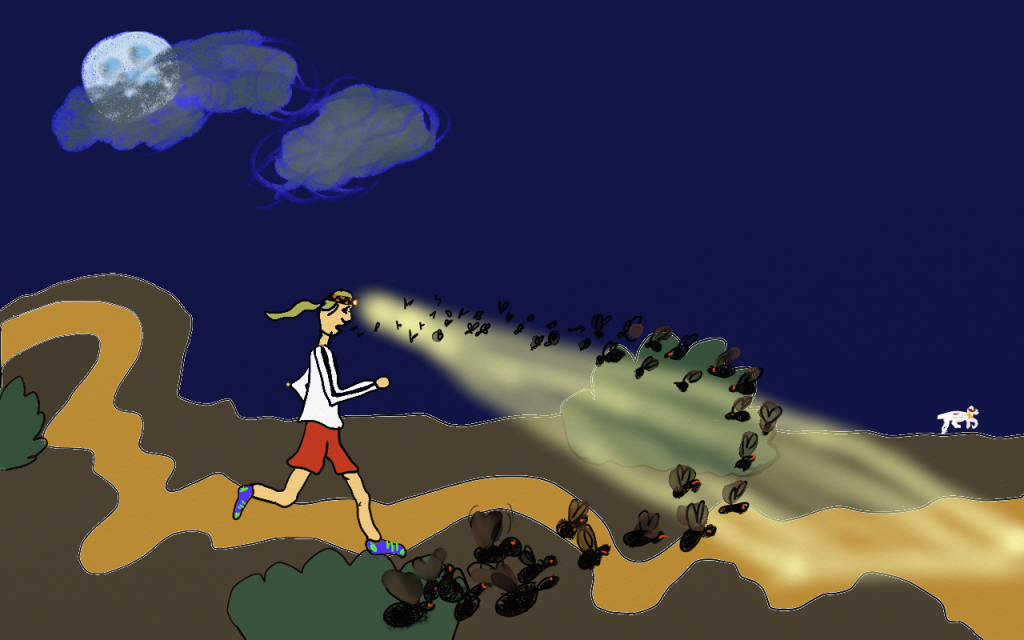 Melnewton.com - Full Article
Melnewton.com - Full ArticleJanuary 29 2017
by Mel Newton
The running, riding, writing veterinarian
When I was helping my husband study for his private pilot’s license, I ran across a section about night flying. Some of the recommendations made a lot of sense for riding at night on the trails too.
Unlike running when I usually where a bright headlamp (and sometimes carry a flashlight too) to illuminate the trail before me, riding at night is an exercise of trust in your equine partner.
Using a white light seriously impacts the horse’s night vision – and longer than it impacts ours because there are some physiological differences in their eye that makes the horse eye BETTER at night, but also takes it longer to adapt to the darkness once exposed to light.
Unless you were reading my blog 8 years ago, you might have missed this post where I explain how a horse’s night vision works. (a little aside – that Standardbred team pictured, Gunsmoke and Buttercup, were the BEST. That post was written at a time when *Minx was still alive, ML wasn’t even born, Farley was my back up horse, the blog had a different name, running an ultra was laughably ridiculous, and riding 100 miles was just a dream. ) *Actually, she may have died earlier in the month that post is from, but now I’m too lazy to verify.
So instead of investing in the best new headlight technology, you are going to be going down the trail with a minimum of light. Perhaps a few glowbars attached to the breast collar, a red light headlamp if you need to check something out, and if you are lucky – a moon...
Read more here:
http://melnewton.com/2017/night-tips-from-a-pilot-and-others/

